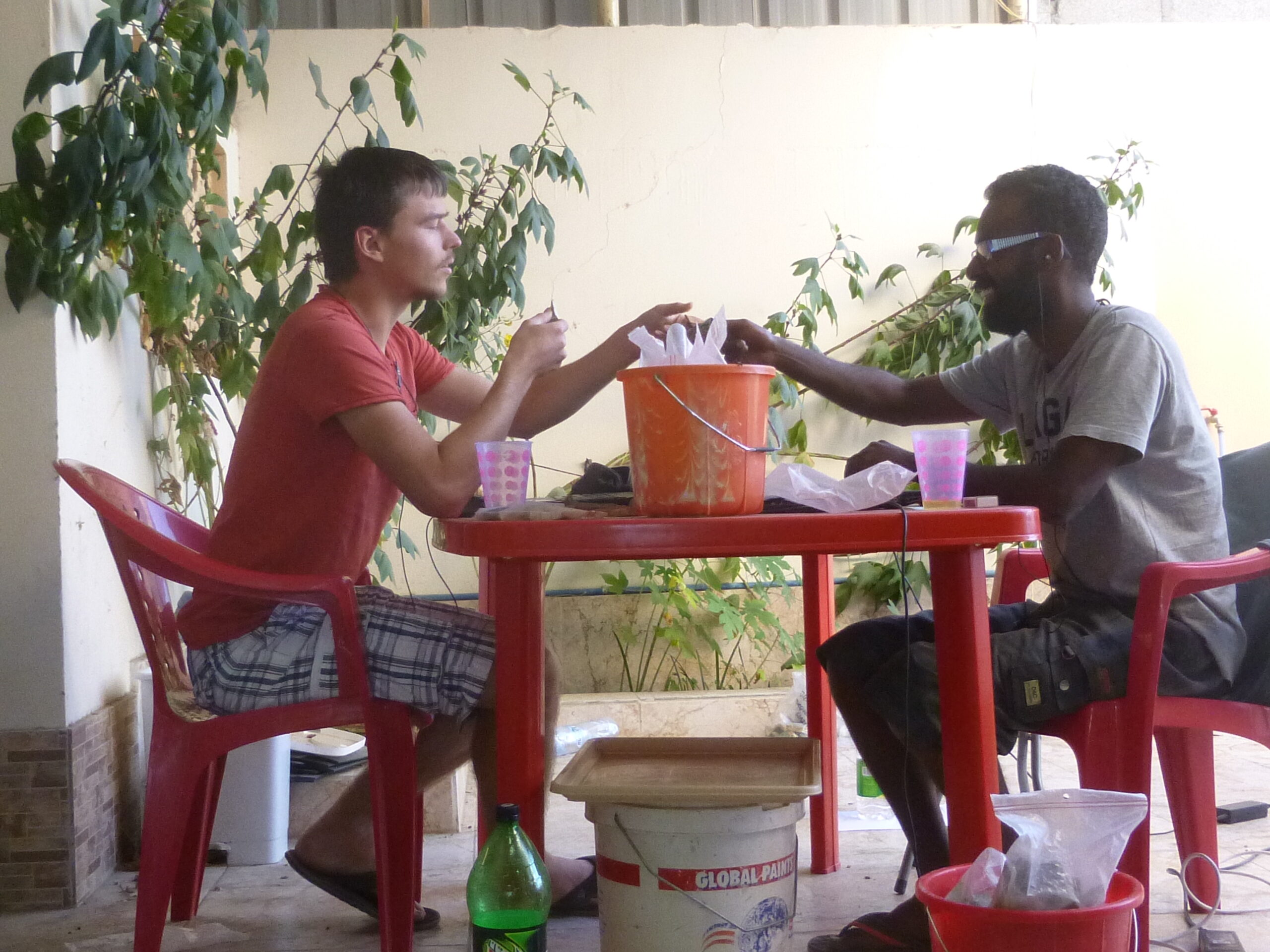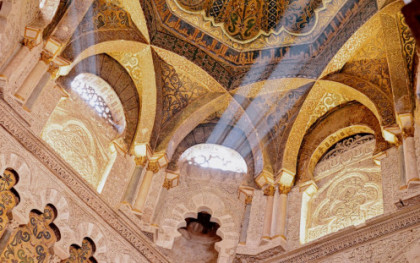Wadi al Jizzi Archaeological Project Study (WAJAP) is a systematic surface survey that records archaeological features and assemblages of the Sohar hinterlands from all periods. The focus of research has been on the Wadi Al Jizzi / Wadi Suq corridor on the one hand, and the Wadi Fizh / Wadi Al Zuhaimi corridor, on the other. Our 2019 study season was a relatively brief project which lasted a total of 18 work days, and comprised a total of 10 people, including pottery specialists for Islamic and prehistoric pottery, softstone and small finds experts, an archaeometrist, an illustrator and GIS experts.
Aims and Approaches
After five seasons of fieldwork we felt it was the time to consolidate our knowledge of the surface archaeology and to prepare for publication of the results, so that they can be made available to academics and stakeholders. We aimed to consolidate our datasets, prepare materials for publication, and perform checks on previous assessments. First, we wanted to study our ceramic, softstone, and miscellaneous assemblages once more. This was necessary because our knowledge of archaeological assemblages has increased considerably over the past years, and we needed to revisit our assessments of the first seasons in order to make sure that our classifications and identifications are consistent and accurate.
Second, although we have produced drawings and photos of our collected assemblages during our five seasons of work, not all of these were of sufficient quality for publication. Therefore, we wanted to produce better illustrations and photos. This included the creation of three dimensional photo models of selected artefacts that we can share with our colleagues and use for future analysis.
Third, we wanted to obtain additional compositional information on our assemblages through scientific analyses. Dr. Dennis Braekmans brought a Portable XRF in order to measure the chemical properties of our ceramic assemblages, the stone beads and the softstone artefacts. Further, we sampled our ceramic, glass and softstone assemblages by selecting small specimens or making clippings of artefacts for export to the Netherlands. These will be analysed by Dr. Dennis Braekmans at Cranfield University and Dr. St John Simpson at the British Museum using a variety of techniques, including petrography, XRF, ICP-MC and INAA.
Fourth, we checked all our records in our database (some 5000 structures were revisited to check for errors and consistency in classifications and descriptions) and GIS files (some data in database was not in the GIS and vice versa). This was a time consuming job, but as a result we now have a reliable database and GIS.
Fifth, we returned to sites previously investigated to take extra measurements with the Differential GPS, check documentation problems and take some extra photos of the sites for the publication. On this basis we produced new maps for many of our sites in GIS. These
have been created as work packages in (open source) QGIS, which will allow us to share this data with colleagues and stakeholders in the near future.
Results of the 2019 Season
We obtained the results we aimed for in the 2019 study season. We now have excellent illustrations and photos for the most important objects, good maps of our sites that can be accessed through open source software, and coherent information in our database.
The re-assessment of our assemblages also led to some revisions of our earlier assessments and I will mention a few examples. Site 22, a large prehistoric cemetery near Wili, was previously dated to both the Umm an Nar period and the Wadi Suq period, but a re- assessment of its ceramics suggests that all the pottery found is of Wadi Suq date. It is still possible that some of the large round tombs do in fact date to the Umm an Nar period, but we cannot conclusively demonstrate this at present.
Site 54, also known as Tell es-Sbul, was re-analysed. Whereas previously we had noted a significant proportion of Wadi Suq material at the site, our new reassessment suggests that the site is predominantly Iron Age, with only a residual presence of Wadi Suq.
Site 84 was found in the final days of the 2018 season and had been assigned to the Late Bronze Age, in part because of the strong parallels with Masafi as a site. However, the study of the ceramics undertaken this season suggests that the pottery is, in fact, late Wadi Suq, transitioning into the LBA, rather than Late Bronze Age in date. We hope to present on this key site in the 2019 Seminar for Arabian Studies. The re-assessment of our database records has also led to a more systematic understanding and classification of the burial structures in our region. We now have a much better understanding of the main types of cairns in our region, how they can be dated and in what types of locations they occur in the landscape.
Outlook
We aim to publish a volume provisionally entitled: “Surveying the Sohar Hinterlands: The Wadi al Jizzi Archaeological Project 2014-2019”. It has also become increasingly obvious that many of our questions cannot be adequately answered on the basis of our survey data. Many sites and structures remain difficult to date and we would like to know much more about what happened in particular structures. How many people were buried in the grave structures and of what age and sex? What kinds of burial goods can be found in these graves? What activities occurred in these buildings and what did the economy look like in the past? In order to obtain more data on such questions we intend to do a follow up project that includes excavation of selected structures.
Acknowledgements
We are grateful for the help of Sultan Al-Bakry, Khamis Al- Asmi, the late Professor Maurizio Tosi, Mohammed Al- Waily, Sumaya Al-Busaidi, Khalil Al-Nadabi, Khamis Al- Oafi, and Nasser Al-Hosni.
by Bleda S. Düring




